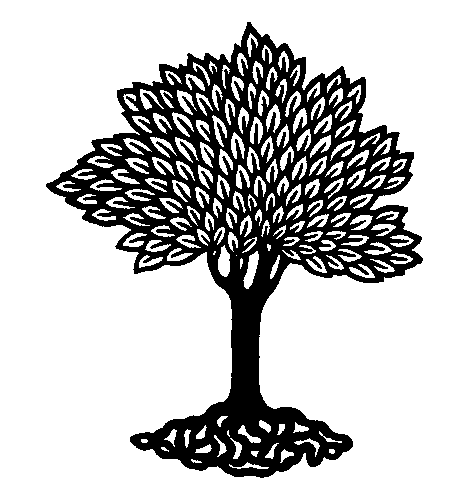
 |
Plant Taxonomy (BIOL308) - Stephen G. Saupe, Ph.D.; Biology Department, College of St. Benedict/St. John's University, Collegeville, MN 56321; ssaupe@csbsju.edu; http://www.employees.csbsju.edu/ssaupe/ |
FLOWERS
I. Angiosperms: angein = Greek for "covered or vessel"; sperm = "seed". Thus, an angiosperm is a plant that produces covered seeds. The "covering" is the fruit (which is derived from the ovary or gynoecium).
A. Success.
Angiosperms are the most evolutionary successful group of plants (supported by their
predominance in most landscapes). There are about 300 families of angiosperms with about
300,000 species.
B. Importance.
Flowering plants are important to humans in many ways: (a) food; (b) medicine; (c) shelter; (d) paper;
(f) perfumes and spices; (g) rubber (h) sweeteners; (i) beverages; (j) energy (i.e., coal,
oil gas are really just partially decomposed, metamorphosed plants; (k) oils, paints; (l)
and lots more. Walters & Keil (1998) summarized it well when they said that "it
is unlikely that humans would have evolved in the absence of the angiosperms".
C. Features.
Angiosperms are characterized by: (1) Vessels in wood; (2) Flowers (modified
microsporophylls and megasporophylls); (3) Fruits - ovules surrounded by carpellary
sporophylls (ovary)
II. Flowers - terminology
A. Floral Parts/Evolution.
The flower is the key feature of angiosperms. Flowers are complex
organs that produce the male and female gametophytes. Evolutionarily speaking - a flower
is a modified shoot. Just as a shoot is comprised of leaves and stem, flowers originated
from vegetative leaves and stem. The "leafy" origin of a flower is readily
apparent in the sterile outer parts (petals, sepals). Except for some of the more
primitive angiosperms, it is difficult to observe the "leafy" origin of the
fertile, inner parts (androecium, gynoecium). The flowers of primitive plants exhibit
their foliar nature to a greater degree. The flower stalk (pedicel) and axis (receptacle)
supporting the floral parts evolved from a shortened stem axis.
The floral parts are attached, either spirally (primitive or ancestral condition) or in layers or whorls (advanced or derived). Typically floral parts alternate in their orientation.
B. Stem Axis.
The pedicel is the stalk subtending the flower. It is an elongated internode. The
receptacle is the swollen or enlarged terminal portion of the pedicel to
which the other floral organs are attached.
C. Sepals.
Outermost layer. Collectively called calyx. Sterile, "leafy",
often green (photosynthetic), but may be colored or petaloid. They enclose the flower in bud and
protect the other floral organs. In addition, since they are frequently
green, they help supply nutrient to the other floral sturctures. They may or may not persist during the life of the flower.
Typically, they are all similar in size and shape.
D. Petals.
Collectively the corolla. Interior to sepals. Note spelling - don't
spell like the objects used to propel a bicycle. Usually colored, larger than sepals,
delicate. Primary function - attract pollinators. Pollination - transferring pollen from
stamens to carpels. Note - pollination is different than fertilization!
Corolla + calyx = perianth. If the sepals and petals are indistinguishable the perianth is said to be comprised of tepals. Some flowers lack a perianth - naked. If only one cycle is present - by definition it is considered to be the calyx, and the flower is said to be apetalous.
E. Stamens (microsporophylls).
Fertile. Collectively called androecium. Male reproductive organ.
Interior to petals. Function is to produce pollen (male gametophyte). Comprised of two
sections: (a) anther - microsporangium or pollen sac, usually 2 or 4 chambered, in which
pollen is produced; (b) filament - stalk that attaches anther to receptacle.
Sterile stamens may be present - staminodes; these are often modified, petaloid.
F. Carpels (megasporophylls)
Collectively gynoecium. Female reproductive organ. Innermost floral
structure. Their function is to produce the female gametophyte, which in turn produces the
egg. Carpels are modified, rolled, spore (seed) bearing leaves and are
the basic building block or units of the pistil. Carpels are differentiated into: (a)
stigma - pollen receptive surface; (b) style - stalk; (c) ovary -
enlarged basal portion that contains one or more ovules (which house the female
gametophyte).
3. Placentation.1. Gynoecium types.
Monocarpellate (also called unicarpellate) - if made from one carpel; apocarpous - made from more than one separate carpels; syncarpous - formed from more than one fused carpels. The term pistil is used to refer to the structure made of stigma, style and ovary. A simple pistil - comprised of a single carpel; compound pistil - made of more than one fused carpels. Botanists generally avoid the term pistil preferring to use "carpel(s)". If you do use pistil, spell it correctly - it's not a weapon!
2. Evolution.
The gynoecium was formed by the fusion of carpels. The carpel folded in middle (dorsal suture) and fused along the margins (ventral suture). At the point of fusion the placenta develops and gives rise to ovules. The locule is inside.
4. Carpel Number.
To determine carpel number: (a) count partitions (septa); (b) count locule
number; (c) count the number of lobes or branches of the stigma; (d) count the number of
lobes of the ovary; (e) divide the number of rows of ovules by two.
G. Numerical Plan - merosity
Most flowers are based on a definite numerical plan - containing floral
parts in multiples of 3, 4 or 5 and are termed 3-merous, 4-merous etc. Monocot flowers are
typically 3-merous while eudicots usually have 4 or 5-merous flowers.
III. Primitive Flower
To summarize, a primitive flower is large, with numerous
spirally arranged parts; large, firm tepals; spirally arranged, flat (laminar) stamens;
numerous spirally arranged, unsealed carpels.
References:
|
| Top | Plant Tax. Home | SGS Home | Disclaimer | |
Last updated:
09/29/2008 / � Copyright by SG
Saupe